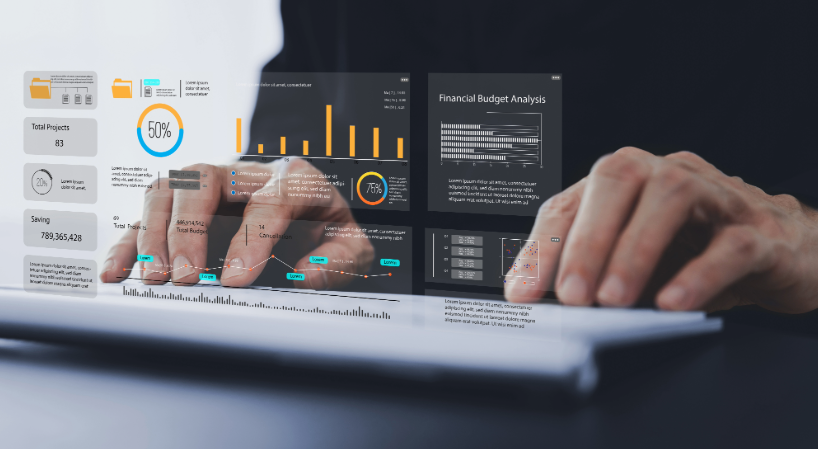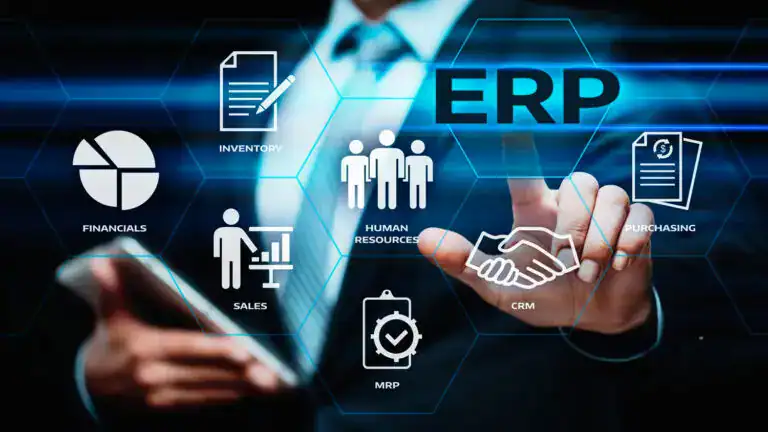How Much Does ERP Software Cost in the UAE? A Comprehensive Guide
hinking about implementing an ERP system for your business? It's a big decision, and one of the first questions that probably comes to mind is: "How much is this going to cost?" Well, the answer isn't as straightforward as you might hope. Much like asking the price of a new car, it depends on various factors like the type of ERP, the size of your business, and the specific features you need.
Factors Influencing the Cost of ERP Software
So, you’re probably wondering what really affects the cost of ERP software. Let me break it down for you.
- Company Size: Imagine this: You're sitting with an ERP vendor, and they explain that the size of your company plays a huge role. If you're running a large business, you'll likely need more user licenses, support for multiple locations, and a system that can handle a high volume of transactions. Naturally, this means a more robust, and consequently more expensive, ERP system.
On the other hand, if you're a smaller business or a startup, the good news is that there are affordable ERP solutions for startups and SMEs, tailored to your needs. These solutions are designed to be budget-friendly yet powerful enough to support your growth."
- Modules and Features: Next, the vendor tells you about the various modules and features. Think of ERP software as a collection of different tools—like accounting, inventory management, sales, and HR.
The more tools you add to your box, the higher the cost. It's important to pick only the modules that your business really needs. For example, if you're not in manufacturing, you can skip that module and save some money. Maybe you can start with the essentials like financial management and CRM, then add on as needed."
- Customization : Next, the vendor highlights the importance of implementation and training. Setting up the ERP software and training your employees can be a significant part of the overall cost. However, they assure you that proper implementation and thorough training can prevent future issues and ensure that the system is used to its full potential. They might share examples of how companies that invested in good training saw much higher returns on their ERP investment.
- Licensing and Support: Finally, you discuss licensing and support. Different vendors have various licensing models—some charge a one-time fee, while others use a subscription-based model with annual payments. Additionally, ongoing support and maintenance can impact the overall cost. The vendor emphasizes the importance of understanding the licensing terms and the level of support offered to avoid unexpected expenses down the road.
Creating an ERP Budget
The vendor then shifts the conversation to budgeting. "So, how do you create an ERP budget? Let's break it down.
- Software Licensing Fees : "First, you need to decide on the licensing model. The vendor explains that perpetual licenses involve a one-time fee, which can be cost-effective in the long run but requires a significant upfront investment. On the other hand, subscription-based models have lower upfront costs and provide flexibility with monthly or annual payments. Each model has its advantages, and your choice should align with your business’s financial strategy and growth plans.
- Additional Hardware: Depending on your deployment method, you might need extra servers and network hardware, which can add to the cost. The vendor points out that cloud-based solutions can reduce these expenses, but if you opt for on-premise deployments, you might need to invest significantly in hardware upfront."
- Data Conversion and Transfer: Transferring existing data to the new ERP system is crucial and can incur additional costs, especially if data cleansing and migration are required. Proper data management ensures that the new system functions efficiently from day one. The vendor shares a tip: planning your data migration carefully can save time and money.
- Customization Costs: If your business processes require specific customizations, factor in the cost of developing and testing these custom features. Customizations can make the ERP system more effective for your specific needs, but they also add to the overall budget. The vendor might share an example of a company that saw significant performance improvements after customizing their ERP."
- Testing and Training :Proper testing ensures the system works as expected, while comprehensive training ensures your staff can use the system effectively. Investing in thorough testing and training can prevent costly errors and ensure a smoother transition.
- Post-Implementation Support Ongoing support from the ERP vendor or a consultancy can be a recurring cost. This includes troubleshooting, updates, and any additional training needed. A reliable support plan can ensure the long-term success of your ERP implementation. The vendor might emphasize the importance of choosing a support plan that fits your business needs."
- Data Conversion and Transfer: Transferring existing data to the new ERP system is crucial and can incur additional costs, especially if data cleansing and migration are required. Proper data management ensures that the new system functions efficiently from day one. The vendor shares a tip: planning your data migration carefully can save time and money.
- Customization Costs: If your business processes require specific customizations, factor in the cost of developing and testing these custom features. Customizations can make the ERP system more effective for your specific needs, but they also add to the overall budget. The vendor might share an example of a company that saw significant performance improvements after customizing their ERP."
- Testing and Training :Proper testing ensures the system works as expected, while comprehensive training ensures your staff can use the system effectively. Investing in thorough testing and training can prevent costly errors and ensure a smoother transition.
- Post-Implementation Support Ongoing support from the ERP vendor or a consultancy can be a recurring cost. This includes troubleshooting, updates, and any additional training needed. A reliable support plan can ensure the long-term success of your ERP implementation. The vendor might emphasize the importance of choosing a support plan that fits your business needs."
Justifying the Cost of ERP Software
While the upfront cost of ERP software might seem high, the long-term benefits can justify the investment. Here are some ways to demonstrate the value of an ERP system.
- Increased Productivity: Automating routine tasks frees up your employees to focus on more strategic activities, boosting overall productivity. The vendor might share how other clients saw significant improvements in efficiency and output after implementing their ERP system.
.
- Improved Business Intelligence"Enhanced data capture and analysis capabilities provide better insights into your operations, helping you make informed decisions. With real-time data and comprehensive reporting, businesses can identify trends, forecast more accurately, and make proactive decisions.
.
- Faster Order to Cash Cycle: Streamlining processes such as order management and invoicing can accelerate your cash flow, improving financial stability. An efficient ERP system reduces delays and errors, ensuring a quicker turnaround from order placement to payment collection.
<br
Choosing the Right ERP Pricing Model
There are two primary pricing models for ERP systems: perpetual licensing and subscription-based (SaaS).
- Perpetual Licensing: This model involves a one-time fee for the software, which is hosted on your servers. It can be cost-effective in the long run but requires a significant upfront investment and ongoing maintenance. This model offers a clear cost of ownership and can be more economical for larger businesses over time.
- Subscription-Based (SaaS):The SaaS model involves lower upfront costs and is hosted in the cloud, with monthly or annual fees. This model offers flexibility and scalability, making it ideal for growing businesses. It reduces the need for extensive IT infrastructure and provides automatic updates and maintenance.
Calculating Your ERP Implementation Costs
Implementing an ERP system involves several steps, each with associated costs. Here’s a general outline to help you estimate:
- Initial Setup: Includes software installation and configuration.
.
- Data Migration:Transferring data from old systems to the new ERP.
- Customization: Tailoring the ERP to fit your specific business needs.
<br
- Training: Educating your staff on how to use the new system.
.
- Security: Ideal for businesses with stringent security requirements.
- Testing: : Ensuring everything works correctly before going live.
<br
Forecasting Hidden Costs
While planning your budget, don’t forget to account for hidden costs such as:
- Staff Training: Additional training sessions may be needed as your team gets familiar with the new system.
.
- Unexpected Customization: Sometimes, you might need further customizations post-implementation.
- Data Conversion:: More complex data migration can incur extra costs.
<br
- Maintenance and Upgrades:: Regular updates and maintenance to ensure the system runs smoothly.
Conclusion
Investing in an ERP system like PACT RevenU can transform your business operations, leading to increased efficiency and growth. By carefully planning your budget and understanding the various costs involved, you can ensure a successful ERP implementation that provides significant returns on your investment.
Ready to take the next step? Contact us today to discuss your specific requirements and get a tailored pricing estimate for PACT RevenU, the leading ERP software in the UAE.






